If one word could describe FC Barcelona’s season so far, it’d have to be injuries. Luis Enrique, the coaching staff that surrounds him, and his thin squad will all have to come together and adapt in a number of ways to make it to January.The month now seems quite distant and somewhat far beyond reach. It could be argued that a long summer with plenty of internationals participating in the Copa America, a lengthy preseason tour in the United States, tough scheduling on early season Supercopas with back to back games, and a difficult early season La Liga fixture list have all played their part in making FC Barcelona look incredibly fatigued, thereby contributing to their injury troubles.However, even if we consider how low fitness levels make injuries more likely, nobody could have foreseen anything like this happening to such a degree. So, in light of this adversity, how has Luis Enrique changed his approach?No matter what he decided to do, the circumstances would inevitably force his hand. On a tactical level, he has maintained the loose system that won him the treble last season. Rather than develop a new system entirely, he has given players slightly different roles within it. The players are interpreting these roles in a new and original way within last season’s overarching framework.Like the rest of the team, Luis Enrique too is waiting for January. And so is his system. Here are five tweaks that have been made to make sure that squad gets there intact.
#1 Neymar in the no. 10 role
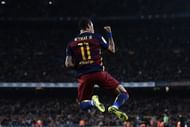
It was inevitable that everyone would turn to Neymar in Messi’s absence. Yet, it is the way in which he has adapted, not the fact that he has, that is most interesting and revealing. Without Messi’s organizational abilities, the team loses its focal point.
In build-up, Messi drops next to Busquets to ensure possession. Once with the ball, he creates advantages through dribbling or his sweeping balls to the opposite wing. And then there is his finishing. Without the Argentine, the team has had to attack much more in transition, with Neymar leading each and every counter-attack as play tilts leftward.
Just like during his Santos days, it is now Neymar who has the tactical freedom to alternate receiving the ball on the wing and in more central positions in the 10 role. Neymar’s newfound responsibility and leadership is evident in each joyous touch, the excitement in each counter-attack he leads. There is a happiness deep within each goal reflective of the Brazilian way of life.
Without Messi, Neymar has been forced to grow up more quickly, transitioning from boy to man. And he is doing so by proudly returning to his origins. This is the only way he knows how- with a smile and a dance.
#2 Different expectations from Sandro/Munir at right wing
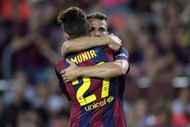
Neither Sandro nor Munir have shined, as Luis Enrique has alternated their minutes on the right wing. It is very telling that the manager continues to refer to them in tandem, as if they were indistinguishable players. To him, they are both young promising players who have been forced into a difficult situation they are still unprepared for.
Plugging them in to the right wing is a temporary measure until Messi’s return and January reinforcements take their place as first choice substitutes up front. Their development is an afterthought to a coach focusing on the short-term.
With this in mind, and with Neymar in more central positions, Munir has had to not only play in a position that is not his own, but also in a manner that doesn’t suit him, hugging the touchline to provide a necessary width as counterbalance. These different expectations have translated into less confident players, especially if compared to the excellent job Munir did filling in for Suarez last season in his natural position. The front three’s interchanging of positions has become less frequent, leaving Munir or Sandro much more isolated.
Positionally, both Munir and Sandro are uncomfortable on the right, both preferring Suarez’s spot, while Sandro could also play on the left wing, though that is Neymar’s spot of course. So, Sandro has attempted to play closer to Suarez in the middle, as a front two, with Neymar in behind.
This has meant that the team sacrifices the usual width on the right wing in order to become more vertical and narrow in transition on the counterattack. Rafinha’s long-term injury would have meant the easiest continuation of the system as a left-footed player on the right. But as a result of his absence, the expectations of the player in that position have changed accordingly.
#3 Busquets at left midfield
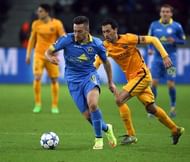
The other major injury is Iniesta’s, and now with Sergi Roberto out for the next three games, the midfield is looking increasingly thin. As a response, Luis Enrique has played Sergi Busquets in Iniesta’s usual spot in left midfield, bumping up Mascherano to the defensive midfield pivot.
At first, it may seem strange to see Busquets closer to the left wing, and Cules gut reactions may have us think he is out of position when he actually is not. At left midfield, Busquets is able to use his excellent ‘winning the ball back’ abilities closer to the opposing team’s goal. He is also positionally much closer to Neymar. This quickly ignites dangerous transitions.
Nonetheless, Busquets relies on his positional awareness, not pace or physical qualities, when he is at his best. Like last season has shown, midfielders under Luis Enrique play in a very vertical, box to box, fashion.
Having to cover for the full-backs and track back from more advanced positions leaves Busquets’s speed more exposed. Moving him up to the left wing also changes Barcelona’s build-up play, as he can no longer drop between the center backs with as much ease.
#4 Sergi Roberto at right back liberates the most creative Alves
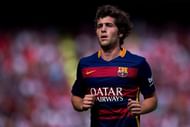
Sergi Roberto at right back has been the talking point of the season. His sense of timing and crossing abilities have been a pleasant surprise. The player has often mentioned how getting minutes at right back has given him the additional confidence to perform well in midfield as well.
As was the case against Bate Borisov, Alves can then move into midfield, where his creative, combinational qualities are taken advantage of. He provided crosses out to the left and created several chances. Without having to provide as much defensive cover, Alves felt much more comfortable going forward when starting from midfield. However, it still remains to be seen what Roberto’s role will be after January and whether playing Alves anywhere beside right back is actually a meaningful alternative.
#5 Defensive issues of a team in transition
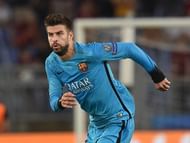
The downside so far are the defensive issues that keep popping up. The symptoms should be seen as a problem with the team as a whole, not just the defense. One cause is Pique’s form since his suspension, since he has a “Messi-like” affect on the defense. In other words, his individual quality, when playing well, hides collective shortcomings and helps others around him raise their game.
Another reason the team has conceded more goals is the squad’s general fitness levels. Players are clearly fatigued and battered by injuries. This has meant that current fitness levels are unable to sustain a system in which lack of midfield control is now more of an issue than last season.
As this is Neymar’s Barcelona, with the team attacking more in transition, this style of play places increased pressure on the defense. The forwards strange inability to finish scoring chances (also tied to fitness) doesn’t help and puts the defense under even more strain.
Overall, the team is pushing forward in transition, both on and off the pitch. Regaining fitness, form and mental sharpness will determine how well they survive until January. Before that, it is about having to adapt even while realistically knowing that none of these changes are likely to be permanent once the squad reaches full strength.
